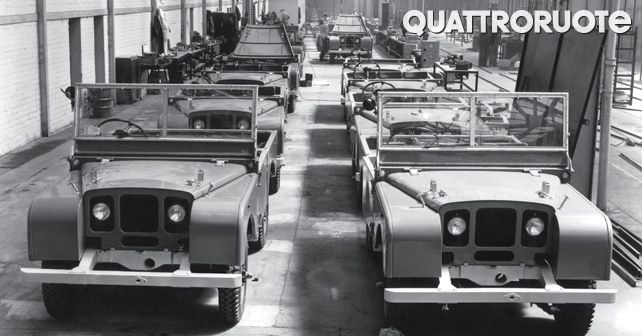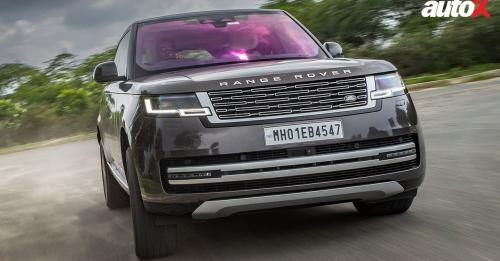
Land Rover is synonymous with the very idea of a go-anywhere automobile. So, on its 70th anniversary, we take you on a global tour of its worldwide success.
It all began in 1948, a chapter in history that goes beyond the automobile – a sort of a case study that requires an understanding of industrial, social and geopolitical history. It’s a fascinating saga to say the least.
Land Rover launched the Series I in April 1948, which became an instant success. Land Rover, however, was sort of overwhelmed by the response the Series I received. While the firm’s expectation was for about five thousand orders from around the world, in the short span of about four months the pre-bookings were more than twice that!
Everybody wanted one – farmers, firemen, forest rangers, the police, construction companies, etc. And if that wasn’t enough, even the armies of most countries came knocking at Land Rover’s door. With such a prodigious demand came the impossibility of satisfying them with only one Land Rover factory – the base factory in Solihull (West Midlands, UK). Land Rover simply couldn’t deliver enough units to satisfy the rising demand. The problem was immediate and urgent, and called for an equally immediate and urgent solution. Establishing another factory would require time, which Land Rover didn’t have. So, the company came up with the idea of outsourcing its production. And thus began the practice of sending ships loaded with assembly kits (and proper licenses) to as many as five continents – a practice that lasted for over 25 years, until the launch of the Defender. ‘The most versatile vehicle of the world’ had now become a world car.
CKD kits
Dispatching assembly kits was never going to be an easy job. In the past, the Volkswagen Beetle, Renault 4 and Morris Mini had been some of the most successful examples of the so-called completely knocked-down (CKD) manufacturing. The idea of a big container filled with the required components, along with assembly instructions doesn’t appear to be very problematic. Now imagine an unending series of ships loaded with hundreds of such containers and heading to over forty different countries – then, perhaps, you begin to grasp the immensity of the situation. There were, in fact, times when even packaging of CKD kits at Solihull were outsourced to third parties because the plant employees already had too much on their plates. Confusion and chaos was inevitable, but the practice continued.
At this point in the story, the success of the Land Rover Minerva (1952-56) deserves a special mention. Approximately 8,800 units of the car were produced – most of them for the Belgian army. There was slight difference in the construction of the Belgian-spec Series. Instead of aluminium, most of the body panels were in steel, and the curved shape of the front mudguard was replaced by a sloping one. Because of these unique modifications, the Minerva soon became popular amongst automobile collectors.
A world of opportunities
Far away from the base factory, there were hordes of assemblers busy putting together machines that everyone had their eyes on. For them, those wooden crates were no less valuable than gold. The following decade saw an unchallenged reign of the Series II in the 4x4 category. People all over the world were engaged in assembling Land Rovers and making a profit – for themselves as well as for Land Rover. Some countries were, however, producing limited quantities – only a few hundred units a year. But they drew satisfaction from the fact that their assembled units were as good as that of England. Things were good and the idea of outsourcing had worked in the firm’s favour. But there’s another aspect to this story.
Something unexpected and weird was happening, especially in the African countries. An unexpected robbing and stealing of vehicle parts, like tyres, engines, and sometimes even entire vehicles had begun. As the number of these robberies increased, it became a cause for concern for Land Rover. So, they came up with another solution – a decision to shift their assembly process to independent factories in strategic markets, like South Africa, Australia and New Zealand, which were soon acquired by British Leyland. Now, some of the components in these markets were locally produced – which, at times, were also redesigned, yielding better results. This entire process sparked an almost evolutionary process in the development of Land Rover.
Franco’s Civil Guard on board the Land Rover Santana.
The Spanish chapter
If one were tasked to single out one chapter in the history of Land Rover’s production, it certainly would have to be the Spanish chapter. Now, Franco’s Spain was depressingly different from what it is today – it was draconic and medieval. But, even then, the country needed a mechanical mule for its peasants or a little van for its unfortunate Civil Guard. The dictatorship had brought about a kind of economic isolation in the country. This prompted a concordat between the Spanish government and Land Rover, which allowed the latter a manufacturing licence agreement to produce vehicles. The production in Spain began at Metalúrgica de Santa Ana – a factory that specialized in agricultural equipment and later came be known as Santana Motor – which was already manufacturing gearboxes for Citroen. In the beginning, the deal was to assemble CKD units. But soon, within the span of a decade, Santana achieved 100% parts localization – and the production moved to a modern facility. The success of this enterprise was such that they even began to export the Land Rover Santana 88 and 109 to South America and Middle East. Units produced here were almost indistinguishable from the ones produced in England. The main differences were mainly related to electrical components – Veglia Bressel rather than Lucas and a more practical half rear door hinged on one side, unlike on the original.
The success of Santana began to attract English investors. The arrival of the Series II began a new chapter in the history of Land Rover’s production, as Santana started experimenting with some new ideas and concepts – a single windscreen, lowered windows and five-speed transmissions. One of the most interesting inventions of this time was a 3.3-litre six-cylinder engine that was derived from the original car’s 2.25-litre four-cylinder engine. Then there were other improvements as well, including tapered leaf-springs, coil springs and disc-brakes. In the early 1990s, the long partnership with the Spanish firm came to an end. Land Rover, however, didn’t slow down and continued with its offensive marketing and aggressive product expansion in other parts of the world.
Land Universe
Directly above is the 4x4 that was born as a small agricultural tractor, but was also used by people to go to Sunday Mass. On the extreme left is a file picture of King George VI, who used Land Rovers for his official parades – a practise that’s still followed by his daughter Elizabeth. Below is the factory in Sydney.
Speed & Durability
Land Rover Down Under
Owing to geographical and political reasons, Australia and New Zealand have been among the biggest overseas markets for Land Rover – at first with direct import, and then with the assembly of CKD kits of Series I and II models, which was followed by Series III in the 70s and 80s. It was indeed a massive operation, targeting both private customers and the armed forces, irrespective of the fact that the Toyota Land Cruiser was the most sold 4x4 of the time. The local Land Rover, in fact, adopted a 3.8-litre diesel Isuzu generating 97bhp, as well as a 192bhp 4.4-litre V8 petrol derived from Buick – which is among the fastest Land Rovers in history. In South Africa, instead of waiting for the ‘Stage 1’ V8 that was manufactured in England in 1979, they opted for a six-cylinder, 2.6-litre petrol engine, generating 110bhp, and a quieter 3.8-litre diesel that produced 74bhp.
Versatile vehicle
The agreement between Land Rover and Santana resulted in the new Series II, demonstrating the success of Land Rover’s strategy of global licensed production.
Andalusian charm
The production started very slowly at the Santana factory in Linares (Andalusia) in 1970.– only five thousand units were produced in 1968, which is one of the reasons that the Santana Series II (both 88 and 109 versions) is a collector’s item.
Suez Crisis
4x4 Diplomacy
The Suez crisis of 1956 was followed by a disenchantment with Great Britain in the Middle East and other non-allied countries. Several Arabic and South America states declared embargos on English goods. And all of a sudden Rover lost some of its primary markets – and it was then that the Spanish tactic started to pay huge dividends. How? Well, even after the crisis, Jordan, Egypt, Columbia Argentina – even Iran – continued their business relations with Spain. This invariably allowed Metalúrgica de Santa Ana, of which Land Rover had a 40% stake, to sell the 88 and 109 in these countries. This also explains why Bogota (Columbia) and surrounding countries still have so many Santana vehicles.
Santana’s Range
Above is a Series II Santana (frame E50805155) – most likely the only Series II in Italy.
© Riproduzione riservata


































Write your Comment